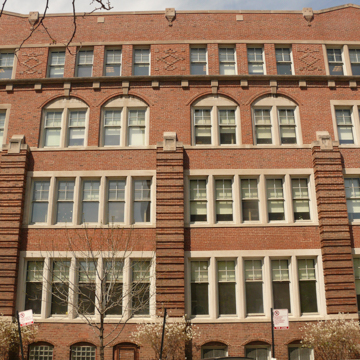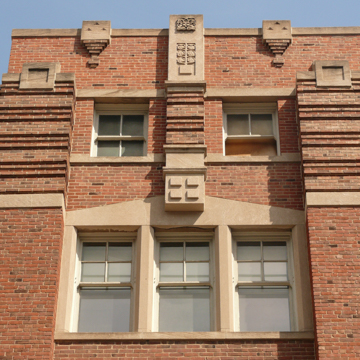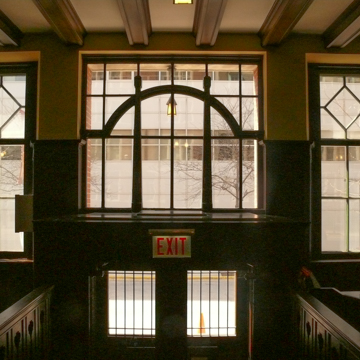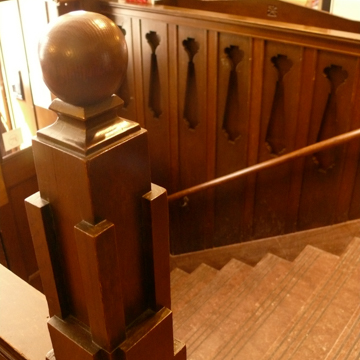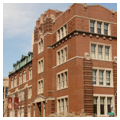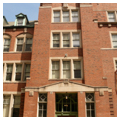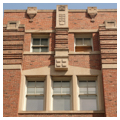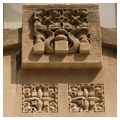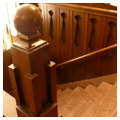This four-story structure was built as the headquarters of the American School of Correspondence and its publishing division, the American Technical Society, both pioneers in offering mail-order courses in architecture, law, and technology, as well as a high school curriculum. Though devoted to education, it contained no classrooms and was instead designed for administrative offices, the processing of student lessons, and the warehousing and shipping of textbooks. Sitting on a 96 x 130-foot corner lot adjacent to the campus of the University of Chicago, this highly detailed brick-and-stone building is one of the Midwest’s premier examples of Arts and Crafts-influenced architectural design. It is an outstanding work of Pond and Pond, one of the most influential progressive architectural firms of the early twentieth century.
The exterior of the American School of Correspondence features two shades of face brick (purplish brown and red) and Bedford limestone trim. An asymmetrical tower creates a strong vertical massing, despite the building’s horizontal massing. Two-story brick buttresses, spread across the four facades, open the masonry walls to large ribbons of windows, complemented by continuous horizontal sills and lintels. The building’s gable roofs are punctuated by dormer windows.
The main entrance is marked by a massive stone portal at the base of the tower. Inside the leaded glass doors is a decorative staircase leading to the main lobby, which features green-stained ornamental woodwork. Other interior spaces, including the offices and warehouse, are simpler in ornamentation.
The four facades are enlivened by detailed brickwork and the Ponds’ unique style of ornamentation, which are organic forms pressing against rigid geometric cubes that are designed to represent the harmony and conflicts of human creativity and architectural structure. Though the effect is highly decorative, ornament was often located to express structural forces.
The American School for Correspondence closed in the 1990s and the building was subsequently purchased by the University of Chicago. It has since been restored and is currently occupied by the nearby University of Chicago Hospital for medical-related offices.
References
Commission on Chicago Landmarks. Preliminary Staff Summary of Information: American School of Correspondence. Chicago: Chicago Department of Planning and Development, 1994.
Swan, David, and Terry Tatum, eds. The Autobiography of Irving K. Pond. Oak Park, IL: Hyoogen Press, 2009.

















